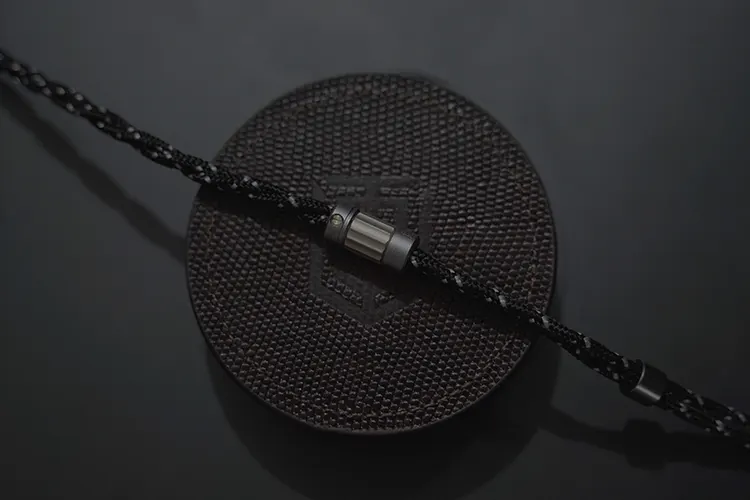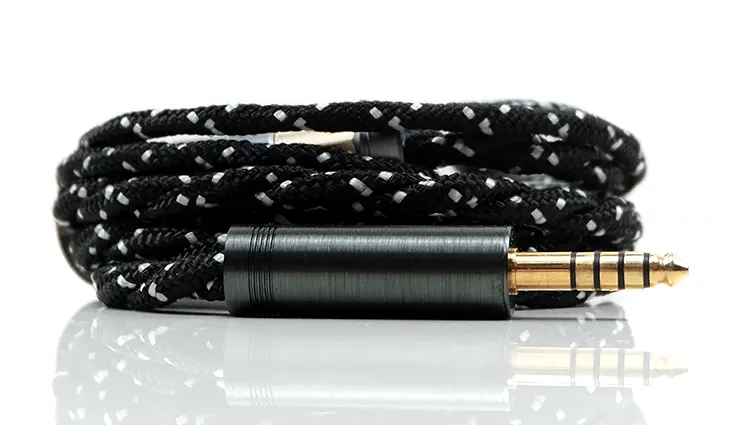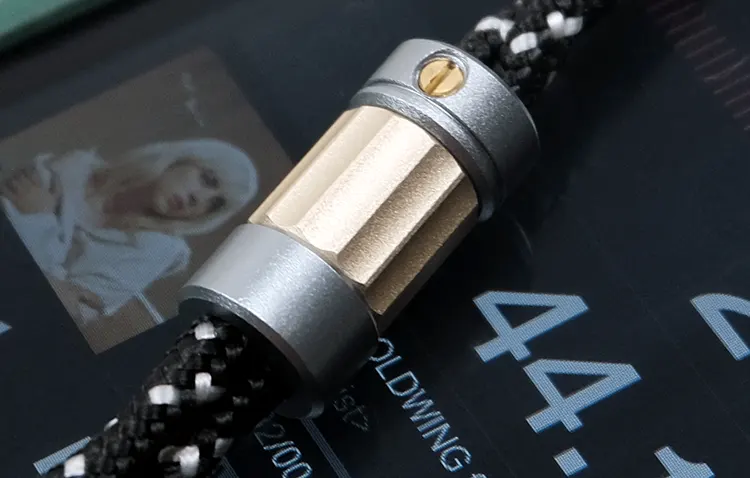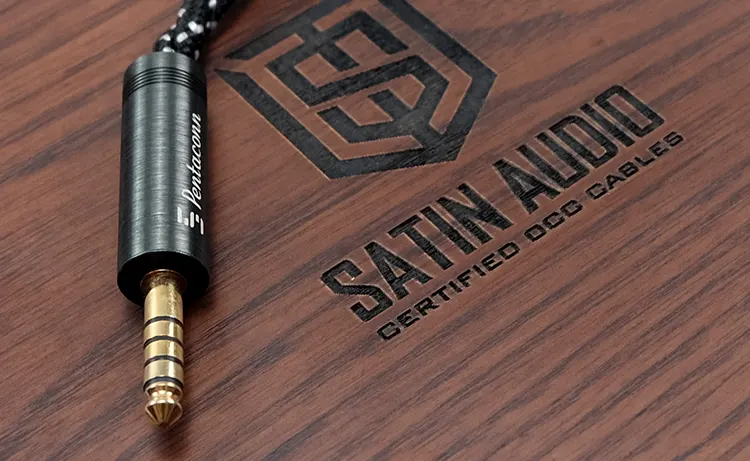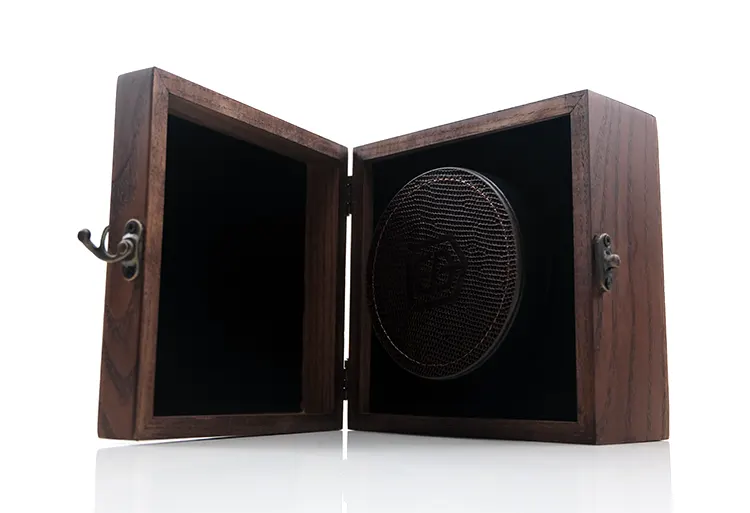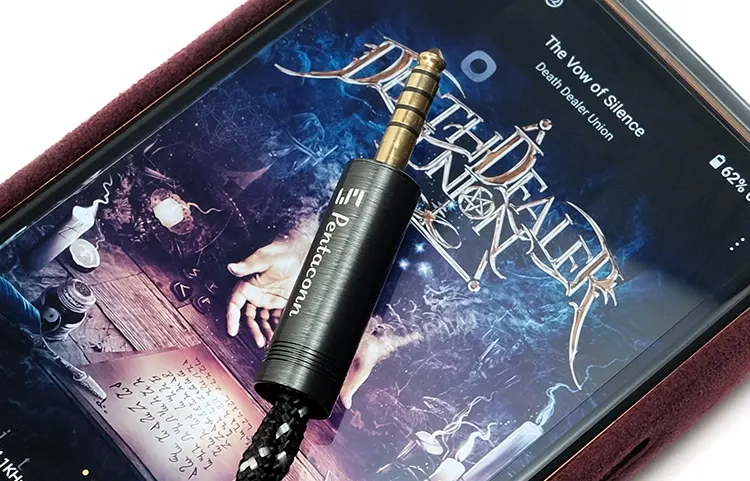In this feature, Marcus reviews the Satin Audio Hera, which is a new high-end palladium-plated silver-gold aftermarket cable for in-ear monitor users. It is priced at $850.
Disclaimer: This sample was sent to me in exchange for my honest opinion. Headfonics is an independent website with no affiliate links. I thank Satin Audio for this opportunity.
To read more about the Satin Audio products we have previously covered on Headfonics, click here.
Note, that this article follows our latest scoring guidelines which you can read in more detail here.
Vietnam’s Satin Audio recently expanded its high-end Olympus Series of aftermarket IEM cables with the new Hera. Satin Audio has been ever-present on our website since 2019 and I do generally consider them to be fast becoming a marquee name in cable making over the last few years.
Josh previously covered Apollo and Athena II, both of which are Olympus line cables with my last Satin Audio cable review being the Warrior Series Perseus back in mid-2022.
The only Olympus cable I covered was the Zeus which is still their flagship cable as of today. I am happy to throw it into the mix along with Perseus and Apollo for comparison purposes on page 2 of this review.
Priced at $850, the Hera is by no means the most expensive IEM cable I have encountered down through the years but it is well above entry-level model pricing.
Overall, I found this cable to color some of my tested IEMs a bit warmer and sweeter than some competing cables, especially through the mids and highs. It is a noticeable change in performance when compared to a few stock cables that come with high-end IEMs.
You can read my full review below to find out how I came to this conclusion and how the Hera compares with the rest of the Olympus cable lineup.
Features
Materials & Wire
The 4-wire Hera sits on the more exotic end of the scale with its choice of palladium-plated silver gold for its wiring. I have seen several companies go back to their roots recently with simpler single-wire creations so this one bucks the trend so to speak.
It is not just a single blend either but a mix of four different materials including palladium-plated silver-gold OCC, an SP-OCC silver-gold alloy, palladium-plated silver, and pure OCC silver.
The precise breakdown of the 4-wire mix is 2 wires of palladium-plated silver gold with pure silver and 2 wires of palladium-plated silver, silver gold, and pure silver.
One interesting aspect of the Hera is a play on the gauge sizing of the included wires. They are listed as 26AWG+ and not the regular 26AWG which has been a traditional sweet spot a few years ago for most cable manufacturers.
This newly renovated gauge structure delivers a larger size or a larger conductor cross-sectional area compared to a regular 26AWG gauge-rated wire. The net gain should ideally be improved transmission and a better overall performance level.
It is an interesting move considering competing companies are all aiming for huge AWG numbers these days and with it some thick and heavy cable creations.

Geometry
The Hera uses what Satin Audio calls Geōmetria for its geometry and should be a familiar geometry now in their Olympus range since it was first applied to their flagship Zeus a few years ago.
This approach has also been applied to Apollo’s geometry as well as a Geōmetria Dual Layer Structure for the Perseus so it is a consistent theme now in Satin’s high-end cable designs.
The implementation is drawn from their original Satin Special Structures from the likes of the Gen 1 Athena and combined with a Type 4 Litz configuration or at least similar to a Type 4.
The geometry of the Hera has 2 layers, or three if you count the Kevlar damping core in the middle which is usually applied to keep the wiring structure stable and consistent during use.
The outer layer is made from stranded bundles of SP-OCC material and the inner is a combination of slightly larger enamel-coated multi-sized strands to prevent oxidization.
Design
Aesthetically, the Hera is quite a departure from what I am used to seeing from Satin Audio cables. It is perhaps the first time I have seen them ditch their usual soft translucent material for the jacket and go with a fabric jacket.
In this case, it is a dark and relatively thick material with white speckles with a twisted finish rather than a braided design.
It is quite an attractive visual and a sharp contrast to the more traditional jacket finishing on the likes of Apollo and Zeus. It is also more malleable compared to the stiffer Perseus design though that cable also uses a 23AWG wire inside that adds a bit of resistance.
The one visual critique I do have is the memory retentive TPU-type coatings on the cable connector side. These normally work well on translucent TPU-type jackets but stick out like a sore thumb on the fabric of the Hera. I might have preferred to have seen a smokier colored material to blend in a bit more.
Finishing
The finishing on the Hera is slightly understated on the connector and plug side but I do give props for the nice Athenian-style column finish of the splitter barrel with its splash of pale gold.
This is a very cleanly chiseled center barrel design meshed between two aluminum caps and locked with a screw thread which is always my preferred locking method for IEM cable connectors and barrels.
On top is a similarly designed aluminum chin cinch ring that glides up and down the Hera jacket beautifully and with just enough resistance to stay in position during use.
The finishing on the 0.78mm 2-pin connectors and the 4.4mm pentaconn plug barrel are similar to the Apollo. The connectors use Satin’s own 2-Pin hybrid TeCu/PEEK and MMCX TeCu/Teflon design that is pitched as offering a better conduction rate compared to regular brass IACS connectors.
The 4.4mm plug is a Pentaconn branded copper variant though you can also get 2.5mm and 3.5mm options finished in what Stain Audio has labeled as Ultimate Copper. This material is sold based on it being as durable as brass variants but with improved purity and transmission.
Visually, the plug is chunky though but not so wide that it will not fit something like the HiBy R8 II with its restrictive silicone case that tends to block a lot of thick plug barrels from inserting properly.
Handling
Despite the chunky 4.4mm plug and thicker fabric jacket, I found the Hera to be a delightful cable in the hand. It’s soft and pliant, with a very low level of memory retention. It just unravels so easily without a kink in sight.
Once hooked up to an IEM the amount of microphonics from the Hera fabric will be slightly higher than a TPU equivalent but below the splitter, I did not find it too intrusive. With better sealing IEMs such as custom units, there will be a higher degree of friction noise traveling up from above the splitter.
The critique from the handling is the same as the design critique and it’s those memory coatings at the connectors. The material is generally quite soft but the formed angle seems a little aggressive or acute and I can feel it on the back of my ear a little with some of the tested IEMs.
Packaging & Accessories
The Hera sample I received came with the Wooden Limited Edition Packaging. This is a branded dark wood-hinged display box with some beautiful long grain streaks and finished with what looks to be an aged brass latch lock to hold it together.
It is more about looks than functionality but Satin Audio did include a coffee-toned reinforced leather puck-style case for an everyday carry and that is the first thing you will see when you open the case.
There is plenty of room inside the case to hold the cable and a set of IEMs. Satin Audio is also one of the few cable manufacturers to regularly include organizer straps.
The supplied clip with the Hera is a beauty with its snake or croc skin style printed on the outside and finished in a dark coffee finish similar to the main case itself. The leather material is also incredibly soft and easy to work with.
Additional accessories come inside a small flat accessory box and they include one additional similarly finished organizer strap, a branded black cleaning cloth made of satin materials, and a small care and maintenance card with your Hera serial number on one side.
Performance Impressions
The following performance impressions were completed using a mix of the HiBy R8 II and the Luxury & Precision P6 Pro for my main sources. The paired IEMs included the Vision Ears VE10, SWEEAR’s flagship SR11, and the Nostalgia Audio Tesseract.
Summary
The Satin Audio Hera delivers on some of the warmth and smoothness from the previously reviewed Perseus but also produces a lighter, sweeter, and airier performance from our selected IEMs, particularly through the upper mids and highs.
I would argue that the Hera produces more of a colored tone than the Apollo which sounds more neutral delivering a more accurate overall harmonic balance with the VE10 and SR11.
The Apollo also sounds more holographic and refined with a tighter, punchier mid-bass performance but lacks the bloom and sparkle of the Hera through the mids and highs.
The best way I can sum up the Hera presentation in its own right is its flamboyance and grandiose presentation akin to that of a quality tube amplifier.
It’s creamy sounding and euphonic at times, especially with the VE10 vocal performances, which simultaneously become more vivid and forward-sounding.
There is more than a touch of lush in the broad rich textured mids, and plenty of sub-bass presence and bloom from the lows, particularly with dynamic driver IEMs but slightly less noticeable with BA driver alternatives such as the Tesseract.
The Tesseract is already a mid-forward flagship monitor so the Hera will amplify that quality along with a bit more sweetened sparkle to the highs than its stock cable. The Tesseract lows also sound a bit firmer with the Hera pairing compared to its stock cable performance.
The Hera staging quality is generally wide and tall, but not as 3-dimensional compared to the flagship Zeus with instrumental separation just a shade behind the Apollo.
Again, I go back to that tube amplifier analogy as its macro-staging is excellent, however, the performance was a little more relaxed and less attentive to nuanced arrangements on the micro-level.
Coloration
Super smooth, at times ‘fleshy-sounding’ but always delightfully sweet-sounding in its coloration is the TLDR for how the Hera performs with our tested IEMs.
If I had to point to one real strength of the Hera it would be the vocals. If you are a vocal lover, especially slightly higher-pitched vocals, then the Hera is an excellent choice.
It sounded incredibly intoxicating when paired with the VE10 for vocal performances though it might give too much of a platform for the Tesseract’s already larger-than-life vocal imaging.
There is a degree of bloom on the lows from the Hera pairings responsible more so than the alternative Olympus range cables.
To a degree, it softens the impact a little providing a fulsome and voluptuous bass performance whereas the Apollo is punchier and the Zeus extends deeper and sounds the more powerful of the two cables with the same pairings.
Treble on our tested IEMs with the Hera sounds more extended and in focus compared to the Warrior Series Perseus. It’s a big factor in that sweet rather than rounded and warmer tone I was hearing from the pairings with the HiBy R8 II.
The Hera performance with the SR11 lacks the same weight as the Perseus lows and lower mids but in return, it delivers more sparkle and contrast creating that sweeter more exuberant set of mids and highs.
Staging & Dynamics
The Hera pairings produce a noticeably wider staging quality when compared to the likes of Apollo, Perseus, and even Zeus using the same 3 IEMs.
It also sounds airier and taller compared to Perseus’s denser and slightly darker tone. Of the three, it is the best cable for lasering in on the vocal presence and vibrancy from each of our tested IEMs.
However, it lacks the same depth and refined separation of the Apollo and the Zeus. I can’t fault the immediacy of the presentation but at times Hera can sound very upfront creating more of a wall of sound rather than the more nuanced presentation of the aforementioned cables.
In some ways, it reminds me of how I hear the Cayin RU6 dongle sound signature when paired with the same IEMs. It ‘soars’, sounding wonderfully inviting through the mids and highs, and not a sharp tone to be found anywhere in the performance.
But like the RU6 the Hera can sound a bit softer and slightly diffuse in its presentation with more of a focus on the macro rather than the micro.
If you want tighter layering, more careful arrangements, and imaging that is more realistic in their positioning then the higher-end Olympus cables will offer more of that.
Click on page 2 below for my selected comparisons.

